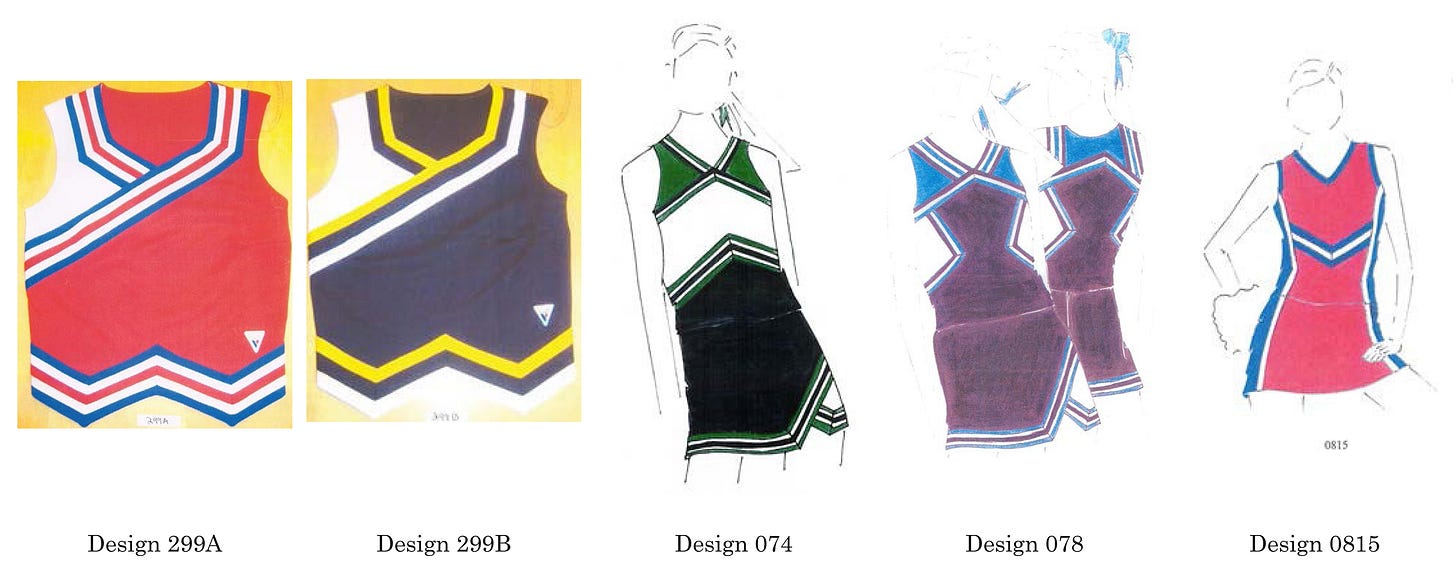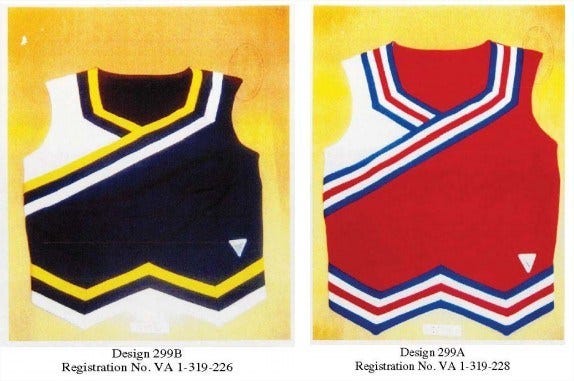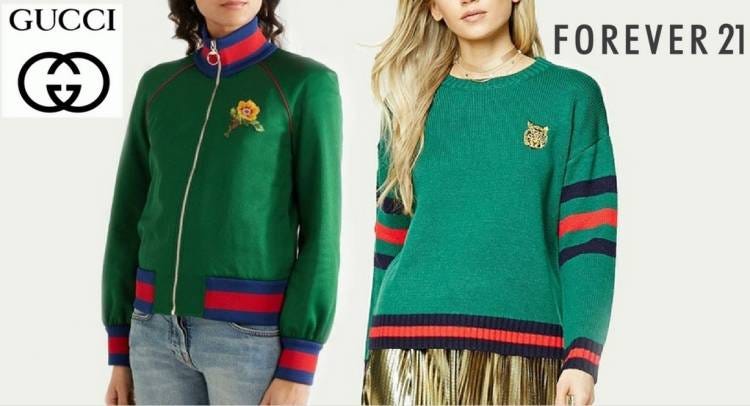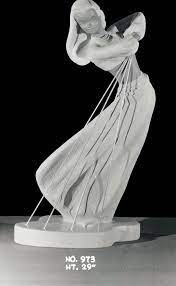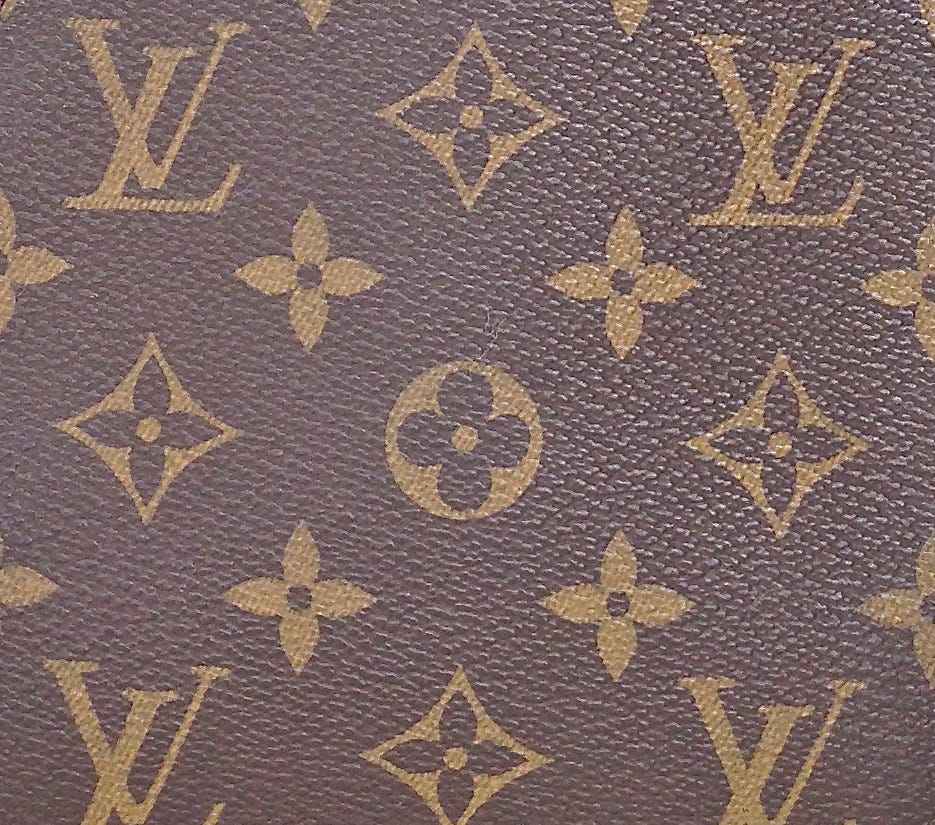Fashion's Legal Triumph: Star Athletica v. Varsity and the Rise of Copyright Protection
A case that set a whole new cheer routine for fashion law
By Sarah Dean, Couture Counsel
Hey, fashionistas and law aficionados! It’s Fashion Week in NYC, my favorite time of year to see mesmerizing designs that are setting trends and turning heads. Have you ever paused mid-strut to ponder how your favorite outfits are legally safeguarded? The law behind that snazzy tee or those Fashion Runway masterpieces is every bit as riveting as who's wearing what this week. Grab your best pair of intellectual glasses, and let's unravel one of the most pivotal fashion law cases that set a whole new cheer routine for fashion law.
Star Athletica v. Varsity
Picture this: You're strutting down the runway, rocking a bold design, a masterpiece of creativity. But what if someone copies it without permission? Thanks to the landmark case of Star Athletica v. Varsity, fashion designers now have a stronger shield against copycats.
Why was this case so momentous? It all started with cheerleading uniforms. Varsity, known for their unique designs, accused Star Athletica of infringing their copyright. The crux of the argument? Can a utilitarian garment, like a uniform, hold artistic merit deserving of protection?
The legal battle wasn't just about pom-poms and sequins: it hinged on the separability test. This test asks: 1) Can the design be separated from the functional aspect of the garment (think 2D artwork)? 2) Is it protectable as art (pictorial, graphic, or sculptural)?
The Supreme Court's verdict was a fashion law game-changer: Varsity's designs, deemed separate and artistic, were granted copyright protection. This precedent elevated fashion designs to the realm of protectable art, empowering creators with legal muscle.
Want to Dive Deeper?
So who's who in this high-fashion legal saga? Time to spill some couture tea! On one side, we have Varsity Brands, the Gucci of cheerleading uniforms, if you will. They've been in the game for years and boast an impressive portfolio of more than 200 U.S. copyright registrations. Stripes, zigzags, and chevron insignia are all legally guarded in Varsity's well-curated design vault.
On the other side of the courtroom, we have the up-and-comer, Star Athletica, sporting uniforms that—uh-oh—look a tad bit similar to Varsity’s. In fact, they looked so similar that Varsity said, "Hold my pom-poms; we're going to court." We're talking about five designs that were at the crux of this iconic case—each representing more than just colors and shapes; they represent intellectual property, the DNA of a brand's identity.
The Legal Plot Twist: Art vs. Utilitarian Function
If a design serves a utility function, like buttons on a shirt or a belt buckle to hold up pants, could it also serve an artistic purpose worthy of protection?
Varsity claims copyright infringement, arguing that their copyrighted designs are separate from the utility of the uniform. They're not just functional add-ons; they’re art.
Star Athletica, not wanting to be branded the Forever 21 of cheer uniforms, counters by arguing “[t]hat the designs served the useful, or “utilitarian function” of identifying the garments as “cheerleading uniforms” and therefore could not be “physically or conceptually” separated… “from the utilitarian function” of the uniform.”
In other words, Star Athletica was throwing down the fashion gauntlet, saying, "Hey, these designs aren't just art; they're essential to what makes a cheerleading uniform a cheerleading uniform!"
This is akin to arguing that the stitching on a pair of Levi's jeans isn't just decoration but part of what signifies them as Levi's. They claimed that these patterns and designs were so entwined with the purpose of the uniform—cheering, duh—that they couldn't be separated and thus weren't subject to copyright protection. The District Court held Varsity had no protection over their designs… but this was not the final decision.
The case made its way to the Supreme Court, fashion’s equivalent of the Met Gala. At stake? The very principle of what can and cannot be considered intellectual property in the realm of fashion. Is a design feature of a useful article copyrightable?
The Court relied on the Copyright Act to assess the ‘separability’ of design elements from utilitarian aspects of the uniform. Varsity's designs were deemed separate and artistic and granted copyright protection.
Separability Test
The outline of the design sketched onto a model/ body raised the question: is this separable?
The Court of Appeals reversed the District courts opinion, holding, “In it’s view, the “graphic designs” were “separately identifiable” because the designs “and a blank cheerleading uniform can appear ‘side by side’ - one as a graphic design, and one as a cheerleading uniform.”
“And it determined that the designs were “capable of existing independently” because they could be incorporated onto the surface of different types of garments, or hung on the wall and framed as art.”
Their verdict? The design elements could indeed be identified separately and could exist independently as a two-dimensional work of art.
Varsity’s copyrighted designs were held to stand alone as two-dimensional masterpieces, regardless of the uniform they were stitched into.
The impact? Imagine a world where designers can confidently innovate, knowing their creations are safeguarded. Contracts can be drafted more effectively, and new generations of designers can learn the legal ropes of protecting their vision.
This wasn't just a victory for Varsity; it was a win for the entire fashion industry. It's a reminder that even amidst sequins and runway lights, the law plays a crucial role in safeguarding creativity.
Precedents: The Dancer Lamp
The Mazer v. Stein case is a seminal U.S. Supreme Court decision that dealt with the intersection of art and utility, specifically concerning the issue of copyright. In this case, the court ruled that a decorative lamp base could be copyrighted, even though the lamp itself had a utilitarian function. The key point was that the artistic elements could be identified separately from and existed independently of the utilitarian aspects of the object.
This concept is highly relevant to the Star Athletica v. Varsity case. Both cases engage with the question of when a utilitarian object also serves as a canvas for artistic expression, and thus, is deserving of copyright protection. In Star Athletica v. Varsity, the Court applied a similar logic to the one in Mazer v. Stein to conclude that the artistic elements of a cheerleading uniform (i.e., the designs) could be copyrighted separately from the uniform's utilitarian function.
So, if Varsity's victory was a haute couture triumph, Mazer v. Stein provided the legal pattern from which their successful outfit was cut.
From Cheering Squads to Couture: The Enduring Impact of Star Athletica v. Varsity
This landmark case wasn't just about stripes on uniforms; it reshaped the fashion landscape. Designers everywhere, from haute couture to ready-to-wear, breathed a sigh of relief. Their creations, once vulnerable to copycats, now held stronger legal ground thanks to the expanded scope of copyright protection.
Gone are the days of worrying about fast-fashion knock-offs mimicking their artistic elements. The separability test, established in this case, provides a clear framework for recognizing and protecting the artistic merit within functional garments. This translates to better-protected designs, fairer competition, and ultimately, a more vibrant and innovative fashion industry.
The impact extends beyond individual creators. Contracts can now be drafted with greater clarity, safeguarding design rights from the outset. Fashion schools can incorporate IP education into their curriculum, empowering future generations to navigate the legal landscape confidently.
Star Athletica v. Varsity may have started with cheerleading uniforms, but its legacy reaches far beyond. It's a reminder that even amidst the glitz and glamour of the fashion world, legal protections play a crucial role in safeguarding creativity and fostering innovation.
References
[1] Star Athletica, LLC v. Varsity Brands, Inc., 580 U.S. __(2017).
[2] Mazer v. Stein, 347 U.S. 201 (1954)
Here at Couture Counsel, we cover the legal runway so you can strut with confidence.





